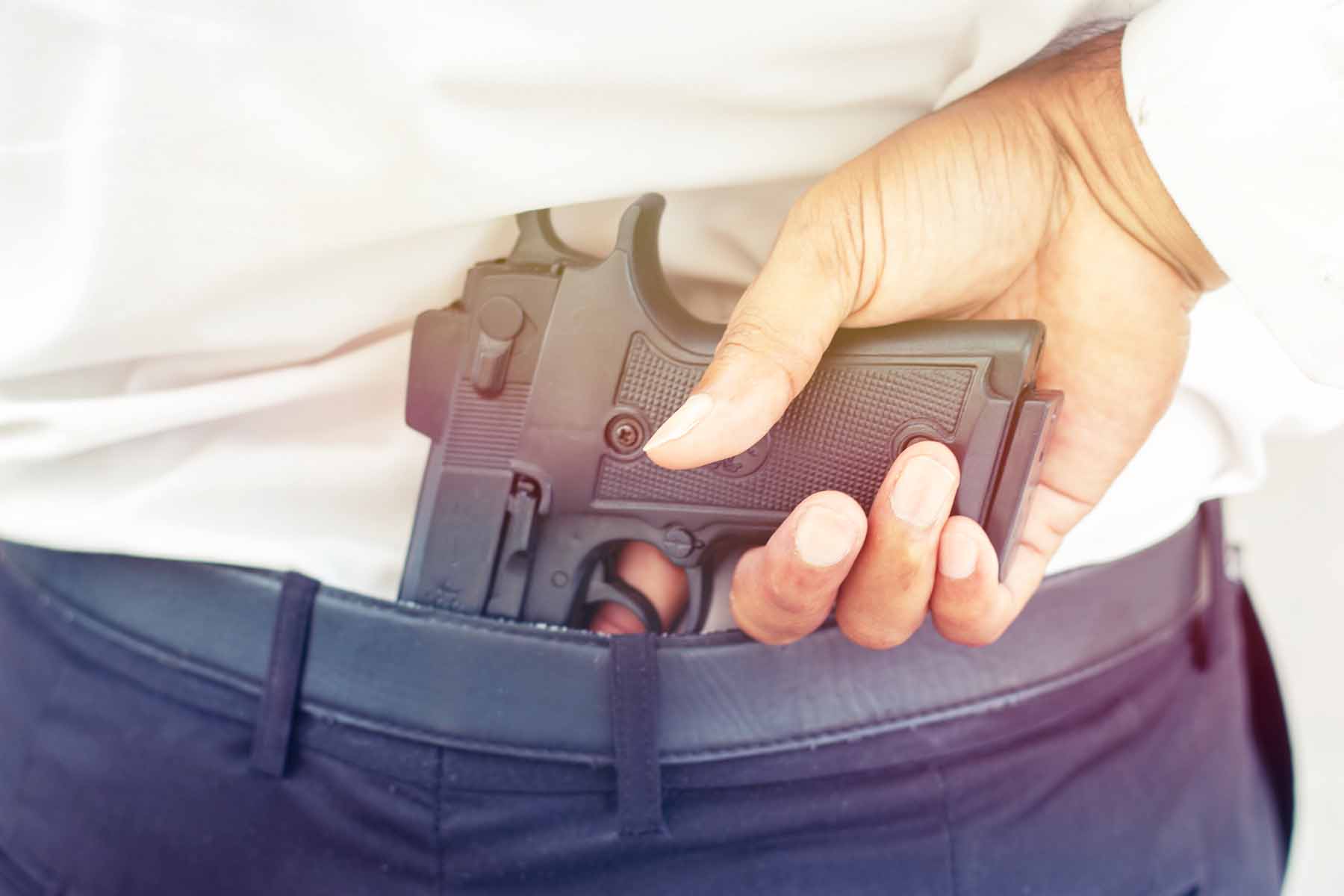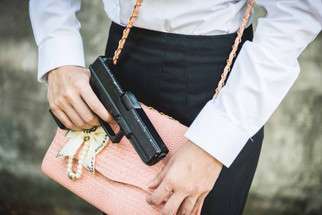Jun 28th 2024
Concealed Carry for Beginners: Tips and Advice for New Gun Owners
Concealed Carry for Beginners: Tips and Advice for New Gun Owners
Concealed carry is carrying a concealed firearm in public, typically for self-defense. Understanding the ins and outs of concealed carry can be overwhelming for new gun owners. This comprehensive guide aims to provide beginners with essential tips and advice to navigate the world of concealed carry responsibly and effectively.
What Is Concealed Carry?
Concealed carry refers to carrying a firearm concealed on one's person or nearby. This method of carrying keeps the firearm hidden from view, allowing the individual to protect themselves while maintaining a low profile. The primary goal of concealed carry is to enable individuals to defend themselves and others without drawing unnecessary attention or causing alarm.
Legal Requirements for Concealed Carry
Before carrying a concealed firearm, it is crucial to understand the legal requirements and restrictions in your jurisdiction. Concealed carry laws vary significantly between states and countries, and violating these laws can result in severe penalties, including fines, imprisonment, and the loss of firearm rights. Key legal considerations include:
Concealed Carry Permits
Many regions require a concealed carry permit or license. A permit involves a background check, fingerprinting, and completing a firearm safety course. Be sure to understand the application process and maintain your permit's validity by complying with renewal requirements.
Restricted Areas
Certain areas, such as schools, government buildings, and private properties, may prohibit concealed carry regardless of your permit status. Always be aware of and comply with these restrictions to avoid legal issues.
Reciprocity
If you plan to travel with your concealed firearm, research whether your permit is recognized in other states or regions. Reciprocity agreements between states determine whether your permit will be honored, so check the laws of your destination before carrying your firearm.
Choosing the Right Firearm for Concealed Carry
Selecting the right firearm for concealed carry is a critical decision for new gun owners. Factors to consider include size, weight, caliber, and personal comfort.
Size and Weight
For concealed carry, smaller and lighter firearms are for ease of concealment and comfort. However, they should still be large enough to handle effectively and shoot accurately. Commonly chosen sizes include compact and subcompact models.
Caliber
The caliber of the firearm refers to the diameter of the bullet it fires. Popular calibers for concealed carry include:
- 9mm: Offers a good balance of power, capacity, and manageable recoil.
- .380 ACP: Smaller and lighter, with less recoil, but may have less stopping power.
- .40 S&W and .45 ACP: Larger calibers with more stopping power but also more recoil and reduced capacity.
Comfort and Ergonomics
The firearm should feel comfortable in your hand and be easy to operate. Consider factors such as grip texture, trigger pull, and overall ergonomics. Visiting a shooting range and trying out different models can help you make an informed decision.
Selecting a Holster for Concealed Carry
A holster is an essential accessory for concealed carry, providing a safe and secure way to carry your firearm. There are several types of holsters to consider:
Inside-The-Waistband (IWB) Holsters
IWB holsters are worn inside the waistband of your pants, providing excellent concealment. They are a popular choice for their balance of accessibility and discretion. For safety, ensure the holster has good retention and covers the trigger guard.
Outside-The-Waistband (OWB) Holsters
OWB holsters are worn outside the waistband and are generally more comfortable for extended wear. However, they may require additional clothing to conceal effectively. They are ideal for colder climates where layers of clothing can help with concealment.
Appendix Carry Holsters
Appendix carry holsters are worn in the front of the waistband, near the appendix area. This position offers quick access and can be comfortable for many people. However, careful attention to safety is required during reholstering.
Pocket Holsters
Pocket holsters are for small firearms carried in the front pocket of pants or jackets. They provide good concealment but can be slower to access than other methods. Ensure the holster covers the trigger and prevents printing (the outline of the gun showing through clothing).
Shoulder Holsters
Shoulder holsters are worn under the arm, with the firearm positioned horizontally or vertically. They are a good option for individuals who spend much time sitting or driving. However, they require a jacket or coat to conceal effectively.
Concealed Carry Responsibility, Training, and Practice
Owning a concealed firearm comes with the responsibility to use it safely and effectively. Regular training and practice are essential for developing the necessary skills.

Shooting Practice
Regular practice at the shooting range is crucial for maintaining proficiency. Focus on:
- Marksmanship: Develop your ability to shoot accurately by regularly practicing with your concealed carry firearm.
- Drawing and Firing: Practice drawing your firearm from your holster and firing quickly and accurately. Start slowly to ensure safety and gradually increase speed as you become more comfortable with your firearm.
- Reloading: Practice reloading your firearm under stress. This skill is essential if you need to reload during a defensive situation.
Defensive Tactics
Consider taking defensive shooting courses to learn advanced techniques and tactics. These courses often cover topics such as:
- Situational Awareness: Recognizing and avoiding potential threats before they escalate.
- Use of Cover and Concealment: Using your environment to protect yourself while engaging a threat.
- Shoot/No-Shoot Scenarios: Practicing decision-making under stress to determine when to use your firearm is appropriate.
Carrying Concealed
Once you have selected your firearm and holster and received proper training, it's time to start carrying concealed. Here are some tips to help you carry effectively and responsibly.
Dress Appropriately
Your clothing plays a significant role in practical concealed carry. Choose clothing that helps hide your firearm without restricting access. Layering can help break up the outline of your firearm and provide better concealment. Patterns and darker colors can help hide printing better than solid, light-colored clothing. Proper fit is essential; avoid clothing that is too tight, as it can make concealment more challenging, but also avoid excessively loose clothing that can hinder access to your firearm.
Situational Awareness
Always maintain a high level of situational awareness. Pay attention to your surroundings and be mindful of potential threats. Situational awareness involves observing people for suspicious behavior or individuals who may pose a threat. Recognize exits and escape routes in any environment you enter. Trust your instincts; if something feels off, trust your instincts and take appropriate action.
Responsible Carry Practices
Carrying a concealed firearm comes with great responsibility. Adhere to these practices to ensure safety and legality. Avoid confrontations and de-escalate conflicts whenever possible; your firearm should be a last resort. Respect property rights by following posted signs and respecting property owners' rights to prohibit firearms. Secure your firearm at all times, whether it is on your person or stored in a secure location.
Regular Maintenance
Regular maintenance of your firearm is essential for reliable performance. Clean and inspect your firearm regularly to ensure it functions correctly. Follow the manufacturer's guidelines for cleaning and maintenance.
Understanding the Psychological Aspects of Concealed Carry
Carrying a concealed firearm can have psychological impacts. Understanding these aspects can help you manage stress and make informed decisions.
The Weight of Responsibility
Carrying a firearm for self-defense is a significant responsibility. Be mentally prepared for the potential consequences of using your firearm. Reflect on the gravity of the decision to carry and the implications of using lethal force.
Stress Management
Stress can affect your ability to react effectively in a defensive situation. Develop stress management techniques, such as controlled breathing and mental conditioning, to help you stay calm and focused under pressure.
Legal and Moral Considerations
Understand the legal and moral implications of using your firearm in self-defense. Familiarize yourself with the laws in your jurisdiction and consider the ethical aspects of carrying a firearm.
Building Confidence
Confidence in your ability to use your firearm effectively is crucial. Regular training and practice build the skills and confidence needed to carry responsibly.To enhance your skills and confidence further, participate in advanced training courses.
Concealed Carry Community and Support
Joining a community of responsible gun owners can provide valuable support and resources. Consider joining a local shooting club or online community to connect with others who share your interest in concealed carry.

Mentorship
Seek out experienced concealed carriers who can provide guidance and mentorship. Learning from others' experiences can help you avoid common pitfalls and improve your skills.
Continued Education
Stay informed about changes in laws, new techniques, and advancements in firearm technology. Continued education ensures you remain a responsible and effective concealed carrier.
Advocacy and Outreach
Consider becoming involved in advocacy efforts to support responsible gun ownership and concealed carry rights. Educating others and promoting safe practices can help create a safer and more informed community.
The Responsibility and Commitment of Concealed Carry
Concealed carry is a significant responsibility that requires dedication, training, and a commitment to safety. By understanding the basics, choosing the right equipment, and practicing regularly, you can become a confident and responsible concealed carrier. Remember to stay informed, respect the law, and prioritize safety in carrying a concealed firearm.
Visit our Gunline Shooting blog for more in-depth information, expert tips, and comprehensive guides. Explore resources to enhance your concealed carry experience and stay informed about the latest firearm safety and training.

